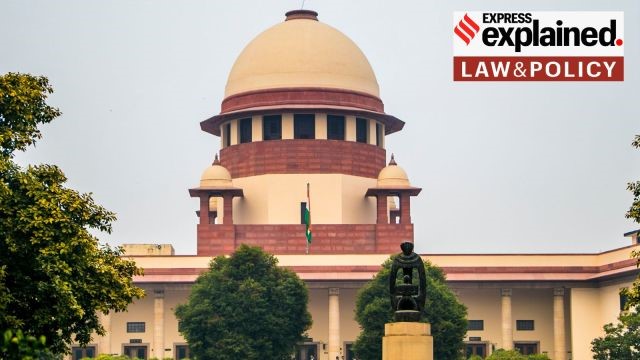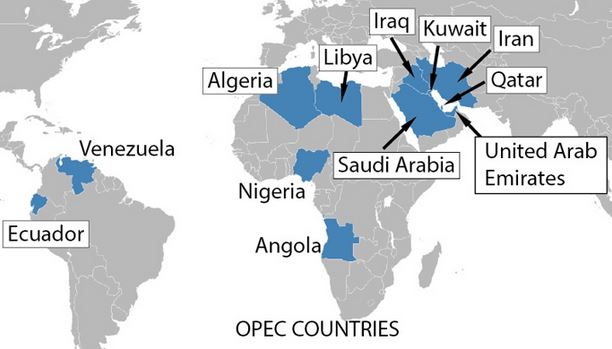Dr. Purnima Devi Barman

- 24 Feb 2025
In News:
Indian wildlife biologist Dr. Purnima Devi Barman has been named among TIME Magazine’s Women of the Year 2025, recognizing her as one of 13 global leaders working toward a more equitable and sustainable world. She is the only Indian woman on the list.
Key Contributions:
- Known for her pioneering conservation work with the greater adjutant stork (locally called Hargila), once critically endangered and culturally stigmatized in Assam.
- Founded the Hargila Army, a women-led grassroots movement focused on protecting the stork’s habitat and changing negative local perceptions.
- Her model uniquely blends wildlife conservation with women’s empowerment, engaging thousands of rural women in ecological and livelihood activities.
Impact:
- Due to her efforts, the greater adjutant stork’s population in Assam has significantly recovered, leading to its status being upgraded from “endangered” to “near threatened” by IUCN.
- The Hargila Army, with over 10,000 members, participates in bird rescue, awareness campaigns, tree planting, and embroidery-based income generation.
- Her approach has become a global model for community-based conservation.
Background:
- Hails from the Kamrup region of Assam.
- Holds a Master’s degree in Zoology from Gauhati University.
- Inspired by her early life near the Brahmaputra and her grandmother’s teachings on biodiversity.
Awards & Recognition:
- Nari Shakti Puraskar (2017) – India’s highest civilian award for women.
- UN Champions of the Earth Award (2022) – For entrepreneurial vision in conservation.
- Whitley Gold Award (2017, 2024) – Often called the "Green Oscar".
Other Roles:
- Director of Women in Nature Network (YNN) – India chapter.
- Member of IUCN’s Stork, Ibis, and Spoonbill Specialist Group.
About TIME Magazine:
- Founded in 1923, USA.
- Known for its global recognitions like Person of the Year and Women of the Year.
- Now operates as a multimedia platform covering politics, science, and culture.
Microsoft’s Majorana 1 Quantum Chip
- 24 Feb 2025
In News:
Microsoft has unveiled Majorana 1, a new quantum chip that marks a significant advancement in quantum computing, suggesting that scalable quantum systems could be achieved in years rather than decades.
What is Majorana 1?
- It is the world’s first quantum chip built on a topological architecture, using Majorana fermions, exotic subatomic particles that are both particles and antiparticles.
- The chip is designed to be more stable and error-resistant than current quantum technologies developed by competitors like Google and IBM.
Core Technology & Innovation:
- Material Composition: Made from indium arsenide (a semiconductor) and aluminum (a superconductor).
- Topological Superconductivity: When cooled near absolute zero and exposed to magnetic fields, it enables the formation of Majorana Zero Modes, which serve as building blocks for stable qubits.
- Topoconductor Architecture: A new class of materials creating a topological state, offering enhanced fault tolerance.
Quantum Advantage:
- Qubit Efficiency: Majorana 1 reduces the number of physical qubits needed to generate logical (error-corrected) qubits.
- Error-Resistance: Its design addresses two major quantum computing limitations — qubit instability (decoherence) and high error rates.
- Scalability Potential: The chip includes eight topological qubits, with future potential to scale up to a million-qubit system.
Why This Matters:
- Improved Reliability: Lower error rates enhance the practical applicability of quantum systems.
- Accelerated Development: Brings the world closer to realizing commercially viable quantum computers.
- Wide Applications: Potential use in drug discovery, material science, clean energy solutions, and more.
- AI Integration: May combine with artificial intelligence to tackle global challenges like microplastic degradation.
Quantum Computing in Brief:
- Quantum Computers use qubits and properties like superposition and entanglement to perform highly complex calculations.
- Major Challenges: Qubit instability and error correction.
- Significance: Quantum computing could revolutionize fields by solving problems beyond the reach of classical computers.
Technology Adoption Fund (TAF)

- 24 Feb 2025
In News:
IN-SPACe, India’s space sector regulator under the Department of Space, has launched the Technology Adoption Fund (TAF) to accelerate the commercialization of indigenous space technologies.
About TAF:
- Objective: To bridge the gap between early-stage innovation and market-ready space solutions developed by Indian startups, MSMEs, and industries.
- Goal: Reduce dependence on imported technologies and strengthen India's position in the global space sector.
Key Features:
- Financial Support:
- Startups/MSMEs: Up to 60% of project cost.
- Larger industries: Up to 40%.
- Funding cap: ?25 crore per project.
- Eligibility: Open to all non-government entities (NGEs) with commercially viable space innovations.
- Support Provided:
- Partial funding for development and commercialization.
- Technical mentoring and guidance.
- Focus Areas: Launch vehicles, satellites, space-based applications, and related services.
- Outcomes Expected:
- Development of new space products.
- Intellectual property generation.
- Enhanced production capabilities.
- Economic growth and job creation.
About IN-SPACe:
- Established: 2020
- Ministry: Department of Space
- Location: Ahmedabad, Gujarat
- Role: Single-window agency promoting private participation in India's space ecosystem.
- Functions:
- Authorizes and monitors private sector space activities.
- Facilitates access to ISRO infrastructure.
- Collaborates with academia, industry, and research bodies.
Significance:
- Encourages private innovation in space tech.
- Aligns with the larger vision of making India a hub for space entrepreneurship.
- Strengthens India’s self-reliance and competitiveness in global space technology.
Remission and the Supreme Court’s 2025 Ruling

- 24 Feb 2025
In News:
Recently, the Supreme Court directed states with remission policies to consider the premature release of prisoners even if they don’t apply for remission beforehand.
What is Remission?
- Remission refers to the reduction of a convict's sentence by the government before the term is completed. It does not nullify the conviction, but shortens imprisonment.
- It is governed by:
- Section 473 of BNSS, 2023 (earlier Section 432 of CrPC, 1973) – empowers state governments to grant remission.
- Articles 72 and 161 of the Constitution – empower the President and Governors respectively to remit sentences.
- Section 475 of BNSS (earlier Section 433A CrPC) – restricts remission for life convicts found guilty of offences punishable by death until 14 years of imprisonment are completed.
Background: SC’s Suo Motu Intervention
- The Supreme Court in 2025, in the suomotu case In Re: Policy Strategy for Grant of Bail, altered the interpretation of remission rules to address prison overcrowding.
- The Court held that states must consider remission for eligible convicts even without a formal application, if a remission policy exists.
Shift in Judicial Interpretation
- Earlier rulings (Sangeet v. Haryana and Mohinder Singh v. Punjab, 2013) required a convict's application for remission.
- The 2025 judgment acknowledges that many state prison manuals already mandate prison authorities to initiate remission review.
- It recognized that failing to consider remission proactively could lead to arbitrary discrimination, violating Article 14 (Right to Equality).
Key Guidelines Issued by the Supreme Court
- Suo motu Remission:States must automatically assess eligibility under remission policies—no application needed.
- Mandatory Remission Policy:States without existing remission policies must formulate a comprehensive one within two months.
- Conditions for Remission Must Be:
- Reasonable, non-oppressive, and clearly defined.
- Based on factors like motive, criminal background, and public safety.
- Aimed at rehabilitation and prevention of recurrence.
- Safeguards Against Arbitrary Cancellation:
- Minor breaches shouldn’t lead to automatic cancellation.
- Notice and hearing must be given before cancellation.
- Transparency:
- Legal aid bodies must monitor remission cases.
- States to maintain real-time digital data on remission.
Significance and Implications
- The ruling helps streamline remission processes and could contribute to decongesting Indian prisons, which are heavily overcrowded.
- It ensures uniformity and fairness in the exercise of executive powers related to sentencing.
- Reinforces constitutional values of equality and procedural fairness for prisoners.
Note:
- Remission ≠ Pardon: Remission reduces sentence, doesn’t erase conviction.
- Articles 72 & 161: Concern constitutional remission powers (President & Governor).
- BNSS Sections 473 & 475: Replace CrPC Sections 432 & 433A, relevant for state remission powers.
- Suo motu action by SC: Taken to address systemic prison overcrowding.
- Article 14 invoked: To ensure equitable treatment of eligible prisoners.
Brazil Joins OPEC+

- 24 Feb 2025
Brazil Joins OPEC+
Source: Times of India
In News:
In February 2025, Brazil officially joined OPEC+, a coalition of oil-producing nations. This development comes ahead of Brazil hosting COP30, the annual UN climate summit.
About OPEC and OPEC+
- OPEC (Organization of the Petroleum Exporting Countries):
- A permanent intergovernmental organization established in 1960 at the Baghdad Conference.
- Aims to coordinate and unify petroleum policies to ensure stable prices and regular supply.
- Headquartered in Vienna, Austria.
- Current members include Saudi Arabia, Iran, Iraq, UAE, Nigeria, Libya, Algeria, and others.
- OPEC+ Formation:
- Created in 2016 to stabilize oil markets, particularly in response to rising U.S. shale oil production.
- Includes 12 OPEC members plus 11 non-OPEC countries like Russia, Kazakhstan, Mexico, and now Brazil (2025).
- Functions as a forum for strategic discussions but not all members are bound by production quotas.
Brazil’s Role and Strategic Significance
- Oil Production Status:
- Seventh-largest oil producer globally, with around 4.3 million barrels/day.
- In 2024, crude oil became Brazil’s top export, overtaking soybeans.
- OPEC+ Membership:
- Brazil joins the Charter of Cooperation but retains autonomy in production decisions.
- It seeks to influence global oil policy while protecting its energy interests.
- Balancing Act:
- While focusing on oil revenue for economic growth and energy transition funding, Brazil also pursues renewable energy through agencies like IRENA.
- This dual approach reflects an attempt to align development with environmental commitments.
Environmental Concerns and Criticism
- Brazil’s decision to expand oil exploration—especially near sensitive ecosystems like the Amazon—has drawn criticism.
- Environmentalists argue it contradicts climate goals, particularly as Brazil prepares to host COP30.
Note:
- OPEC+ is not a formal organization but a strategic alliance.
- Brazil is part of OPEC+ but is not bound by production quotas.
- OPEC’s headquarters is in Vienna, Austria (Austria is not an OPEC member).
- India is not a member of OPEC or OPEC+.
